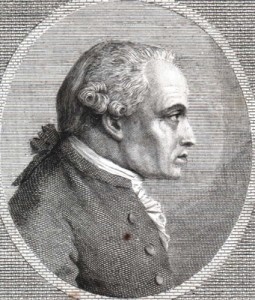Chapter Two: Aesthetics
More video: Metaphysics of Quality >>
—The term ‘aesthetic’ is taken from the Greek word meaning ‘of the senses’, which are knocked out by an ‘anaesthetic’. According to Plato, the senses present us with an ever-changing flux, so they are intrinsically unreliable and offer no basis for knowledge. Since knowledge was the philosopher’s ultimate goal, Platonists have generally been ill-disposed towards the senses and the world of appearances reported by them. …Then [a university philosopher] decided that the ancient distinction between perceived things [aisthêta] and things known to the intellect allowed for an independent science of perception – aesthetics. Rational perfection was identified by reason, but another perfection existed in perceived phenomena, which strikes us as beauty.— The Truth about Art, p. 21
These speculations were summarised by Immanuel Kant in his Critique of Judgment (1790), which turns out to be the main source for many of our assumptions about Art. Kant (fig. 2.1) had sought to explain why everyone should agree on a judgment of taste, whose object was beauty. This was a futile undertaking, since no intellectual construct can pin down beauty. Beauty like quality eludes definition because it is not independent of the observer. Since academics aspire to objectivity, the benchmark of science and scholarship, they shy away from issues of quality, which is neither objective nor quantifiable. Yet nor is it subjective, for the merits of Michelangelo or Mozart, a luxury car or a delicious meal, are not fabrications of the observer, audience, driver, or diner. In Zen and the Art of Motorcycle Maintenance Pirsig found Quality in the union of subject and object: Quality is the response of an organism to its environment. (He used a capital Q to indicate the complete subject–object experience.)
Pirsig (fig. 2.2) further returned Quality to the philosophical mainstream by tracing it back to the discipline’s founding fathers. In Plato’s dialogues, Socrates repeatedly challenges his interlocutors to define aretê, the word traditionally translated as ‘virtue’, and more recently rendered as ‘excellence’. Quality is an even better word for the value that unsettled Socrates’ rationality. Since the experience of Quality is dynamic and preverbal, the sophists he challenged to define it were all bound to fail. Aretê will not be pinned down by words, though its presence is palpable, and an art historical canon is made up of its myriad manifestations. Indeed the Latin word ars and the Greek aretê share a common Indo-European root.
This chapter also considers image-making, which is what Gombrich had meant by [fine] art. One of Gombrich’s greatest achievements was to show that sculptors and painters do not imitate nature, as Plato had claimed. They imitate the works of their predecessors, adjusting those models by trial and error to achieve – so Gombrich argued – an ever closer correspondence with nature. That goal, of course, was adopted only in particular periods and places, notably in early Greece and Renaissance Italy. What artists everywhere have always sought is excellence, which they attain by adjusting their inherited tradition to the needs of the present. This synthesis of Pirsig and Gombrich’s profound insights supplies the book with its thesis.
Reference: Robert M. Pirsig, Zen and the Art of Motorcycle Maintenance, An Inquiry into Values (1974; 1999)
< Previous Chapter | Next Chapter >



I congratulate you on this first-rate exercise in intelligent enquiry, freshness, iconoclasm and the superb handling of such a wide swathe of material. However, I am unsure about the central idea of an artist imitating other artists rather than nature, and I wish to put a question to you. I am assuming that by nature we mean the material phenomena of our world, which should also rightly include the social structure or fabric man creates for himself.
Take as an example: 1. Pierre-Auguste Renoir’s painting Luncheon of the Boating Party, 1881, and 2. Edward Hopper’s painting Cape Cod Morning, 1950. Renoir places his group of festive people in the centre of the painting, slightly separated from the natural background by the structure of the restaurant. Nature looks benign, bright and unchallenging, in fact in harmony with mankind.
In contrast, Hopper depicts the woman very much separated from the natural world; confined to the left hand side of the picture in the physical structure of the house, she looks uncertain; is she waiting for someone or something to happen? As a historian I see the value of this painting in the statement about the divorce between man and his natural environment, isolated in suburbia, a theme/perception which places Hopper in the canon of great art.
As an art historian do you see the value in the way Hopper has modified the tradition of painting? Which point of view would you adopt? Would you conclude that the primary significance lies in the latter? Yet isn’t my point equally valid? So what exactly does Hopper imitate?
Thank you very much for your thoughtful response to The Truth about Art. On your specific question, the thesis of the book is that Renoir and Hopper would not have – could not have – painted the pictures you mentioned without having taken previous paintings as their starting points. If Renoir had stayed in Hopper’s house at Cape Cod, he wouldn’t have painted an image anything like Cape Cod Morning, since he drew on different templates (Gombrich’s schemata). Similarly Luncheon of the Boating Party could not have been painted in the 1780s or 1980s.
I looked up Hopper in The Oxford Companion to Art, and see that he trained as a commercial illustrator, a pictorial style that coloured all his subsequent work. He then painted under Robert Henri, the leading light of the Ash-Can School, whose example directed him towards a particular type of contemporary subject. We then read that he was ‘heavily influenced by Impressionism’ during three long trips to Paris, but that John Sloan’s work redirected his interest back to American subjects.
Cape Cod Morning looks photographic. However even if Hopper took a photograph of the scene before painting it, his choice of that bay window with the solitary woman looking out was guided by his previous pictorial experiences. His memories plus the stimulus of the moment must have recognised the possibilities of this picture. He then adjusted the shapes of the clapboard house, the contrasting textures and colours of the trees and grass, and adjusted the woman in the red dress leaning into the light, thinking we know-not-what, until everything struck him as right. In the language of the Metaphysics of Quality, he modified his (static) memories as prompted by the dynamic Good. Were we to say he ‘imitated nature’, we would miss the Good, both static and dynamic, which guided his selections from nature and tradition.
What those pigments on canvas mean naturally varies with the observer. You bring to them a set of memories, experiences and interests that are bound to differ from Hopper’s. In your case the painting represents ‘the divorce between man and his natural environment, isolated in suburbia’. A carpenter, arboriculturist, and dressmaker would appreciate other features of the painting.
Paintings don’t have one meaning (particularly not one inserted by the Zeitgeist). At best an art historian tries and recover the Quality that Hopper invested in the painting. Which is tricky, since he left the meaning of his images deliberately ambiguous.